
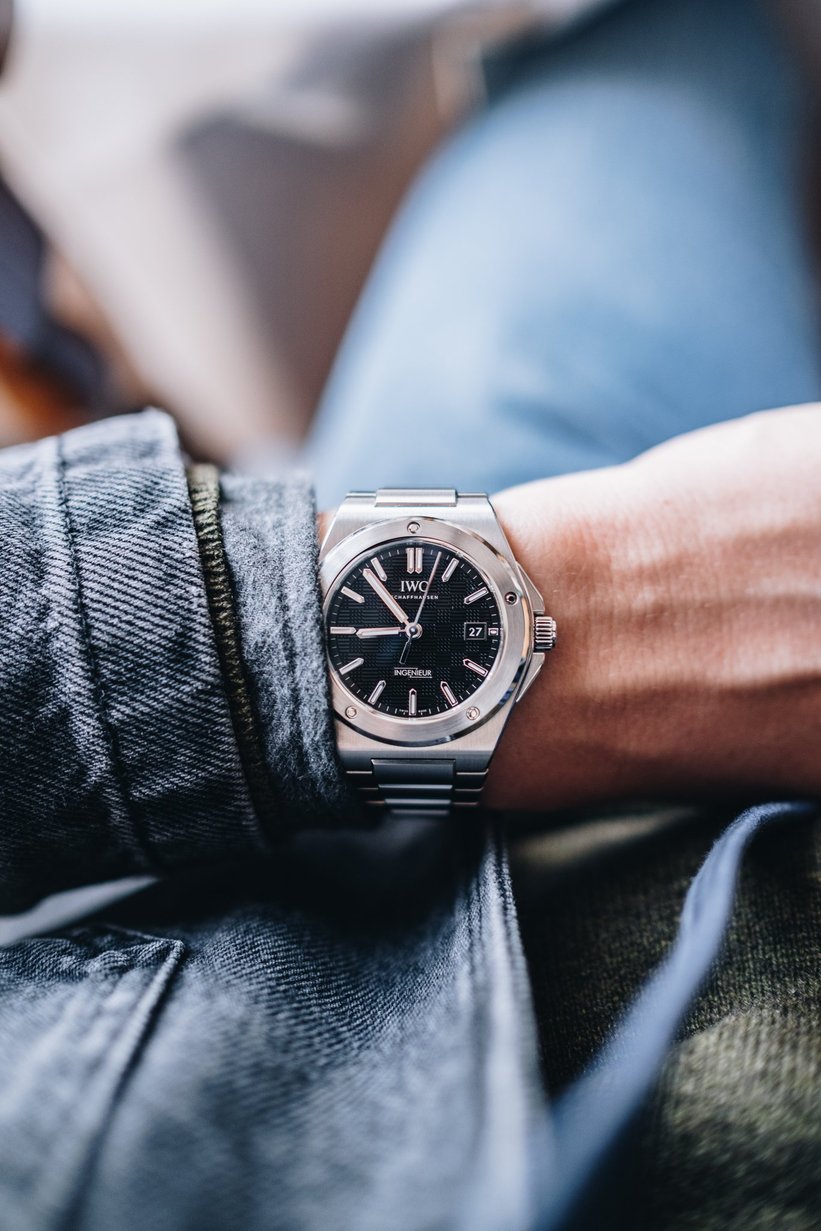
Sometime luck strikes and someone lets you in on an exciting secret. In this case (pun not intended) in late February this year - exactly a month before its official release - our friends from IWC asked me if I wanted to take a prototype of the brand new IWC Ingenieur Automatic 40 for a one-day spin “in the field”. I was ecstatic and accepted immediately. And as this particular watch draws heavily from the iconic design of the late genius designer and artist Gerald Genta, I thought that it would be a good idea to embark on a design spotting mission in the jet-setting location of the Engadin Valley. It's a place which potentially sees more elegant steel sports watches than any other in the world, but also one where modern design isn’t in particular focus. Mission impossible? Let’s find out.


9:00 am - A good start to the story at Suvretta House
The day starts around 9 am, at the iconic St. Moritz grand hotel, to the accompanying noises of waiters rushing through the breakfast room and lobby, clinking cutlery and the sound of steam-frothed milk for the many hundreds of cappuccinos that will be consumed by the hotel's guests on this particular morning. It's reassuring cacophony of sounds in a unique institution, one which feels like a real world version mash up of Tintin and Wes Anderson derived aesthetics, but in reality it actually might’ve inspired both of them.
The ornamental doors, staircases and ceilings as well as the plush lobby couches, covered in Missoni-like patterns, stand in stark contrast to the watch that was just delivered, but create the perfect excuse to talk about its history. Specifically about the first Ingenieur. Created by IWC in 1955 - model reference 666 - and developed by Albert Pellaton, it was a watch which came with a revolutionary bi-directional winding mechanism, and more importantly, a soft iron inner-case that shielded it from magnetic fields up to 1000 Gauss.

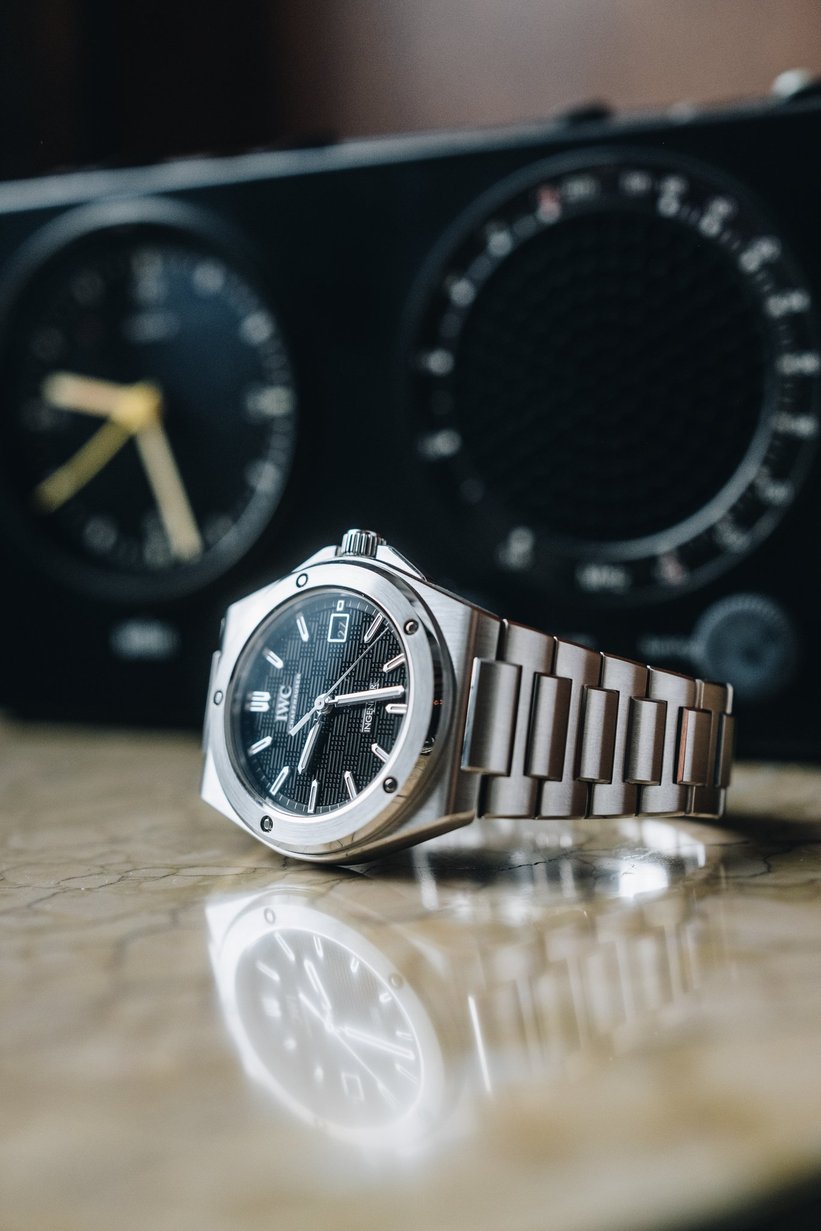
Dubbed the “Ingenieur”, the timepiece was made for professionals: doctors, radiologists, engineers and scientists. People who needed the highest level of precision and worked exposed to magnetic fields, but more importantly, it was for individuals who pushed the envelope in technical development; that optimistic driving force behind a post-world-war reality. However, what’s important to understand from a design point of view is that this timepiece was, back then, largely a dress watch. Simple and elegant. Mostly sold on an alligator strap and therefore fitting to the lavish atmosphere of a place like Suvretta House.
Then, in the 1970s, things changed. The US Dollar got uncoupled from the federal gold reserves, and its value fell in relation to the Swiss Franc, making Swiss-produced timepieces very expensive. A global oil crisis came and changed the car world, while simultaneously the watch world was flooded with extremely precise and cheap quartz models from Japan. These never ran late or early, didn’t need elaborate tourbillion cages and weren't affected by magnetic fields. More importantly… they practically didn’t require servicing.
All over the globe, people were accepting a new lifestyle direction - a simplistic and streamlined philosophy best expressed by the Dieter Rams quote “good design is the least amount of design possible” - an extreme version of reductionist form following function. In order to survive, Swiss manufacturers had to react.
As I think about this, I look for unobvious, modern design cues in the hotel and in the process find an interesting room near the Club Bar. The walls and ceiling are covered with very simple large wood panels, creating an organised and cosy atmosphere. The fireplace is made out of the big stone blocks and looks like a Bang & Olufsen stereo. All this contrasts with slightly scary wall drawings of folk-tale inspired beasts that “live” in the mountains. It's a strange and mesmerisingly beautiful space, too dark to photograph properly. To take pictures of the new IWC Ingenieur Automatic 40, I bust out a Rams-designed Braun radio with alarm clock, borrowed from our editor-in-chief, and head over to one of the marble parapets.


10:30 - 11:30 - James Turrell’s “Sky Spaces” tower in Zuoz
The cylindrical rotunda installed by the artist in Zuoz is a place of peace and contemplation. The round opening in the ceiling allows for an extraordinary perception of how the light and colour of the sky and the space they illuminate change throughout 24 hours. A natural clock of sorts, just one that deals in emotion. At its core, it's the same as an ancient Roman idea already explored in the Pantheon, just revisited contemporarily, a little bit like the watch I’m wearing today.
Although, while the Pantheon distracts with its interior, it feels like the space designed by Turrell focusses my attention. “Look at the coincidence of the architectural inner space and the natural outer space” it says. It’s a play on how contrast can bring out the essence of something. This approach is clearly framed by the shape of the the doorway, which mimics Piz Uter, a mountain located on the opposite side of the valley. As a photographer, I understand the value of focusing attention very well. Sitting inside the “Sky Space” feels like sitting inside the viewfinder of my camera.
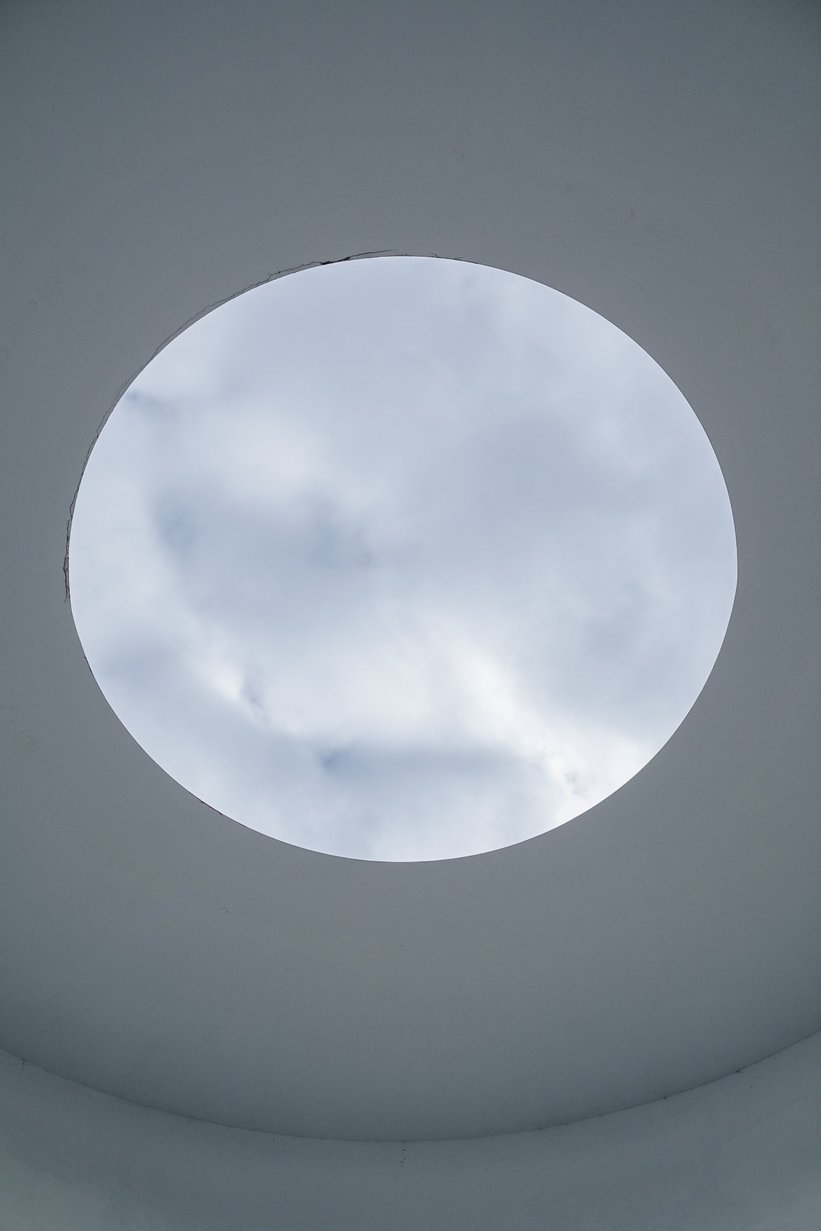
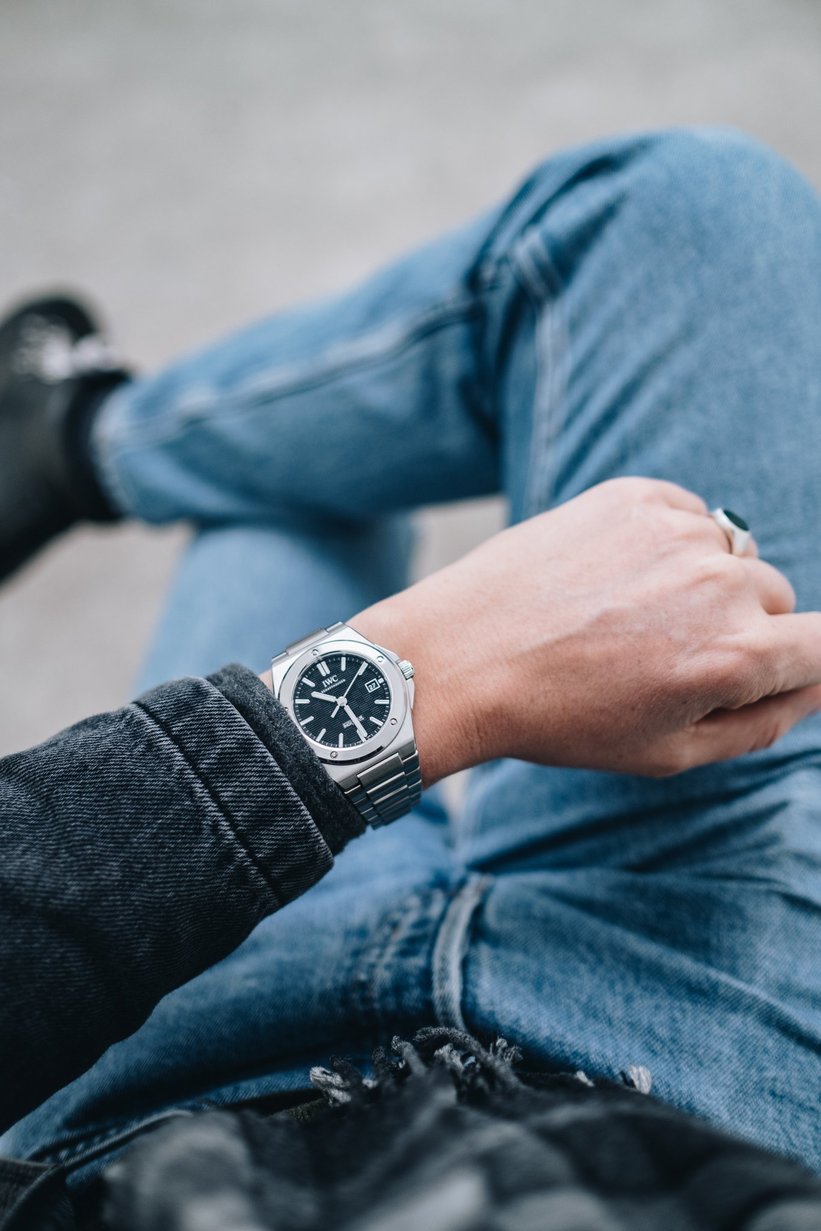
I glance briefly at the watch and think about Genta and how the word “focus” is omnipresent in his designs and even the way he worked. He apparently never did sketches and once he started drawing (always in 1:1 scale), the resulting artwork was also the finished design. It is this mindset that allowed him to almost singlehandedly save the Swiss watch industry with his triptych of sought-after, legendary sports watches with integrated h-link bracelets during the quartz era.
These watches completely blurred the borders between elegant dress timepieces and practical sports ones that could be abused daily. All three were apparently designed overnight. The first an octagon - a shape Genta was obsessed with - the second a squircle, the third… perfectly round. This was the 1976 IWC Ingenieur SL “Jumbo” ref. no. 1832.


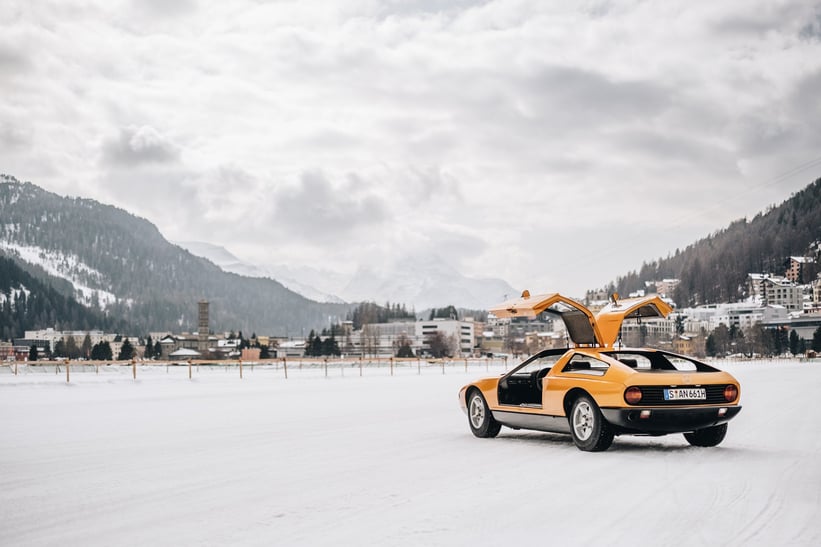
11:40 - 12:30 -An encounter with the Mercedes-Benz C111
It’s a bit of a planned coincidence that I run into the team from Mercedes-Benz Classic just before noon strikes. The C111 Mercedes was as revolutionary a car in terms of design and engineering as the Ingenieur was a revolution in the watch world. Wedge shaped with gull-wing doors, flying buttresses, pop-up headlights, and a mid-mounted rotary Wankel engine. Was it possible that Bruno Sacco and Genta were friends? Was the “Jumbo” SL’s name inspired by the Stuttgart-produced automobile? I contemplate that while jumping into the cosy cabin of the sports car.

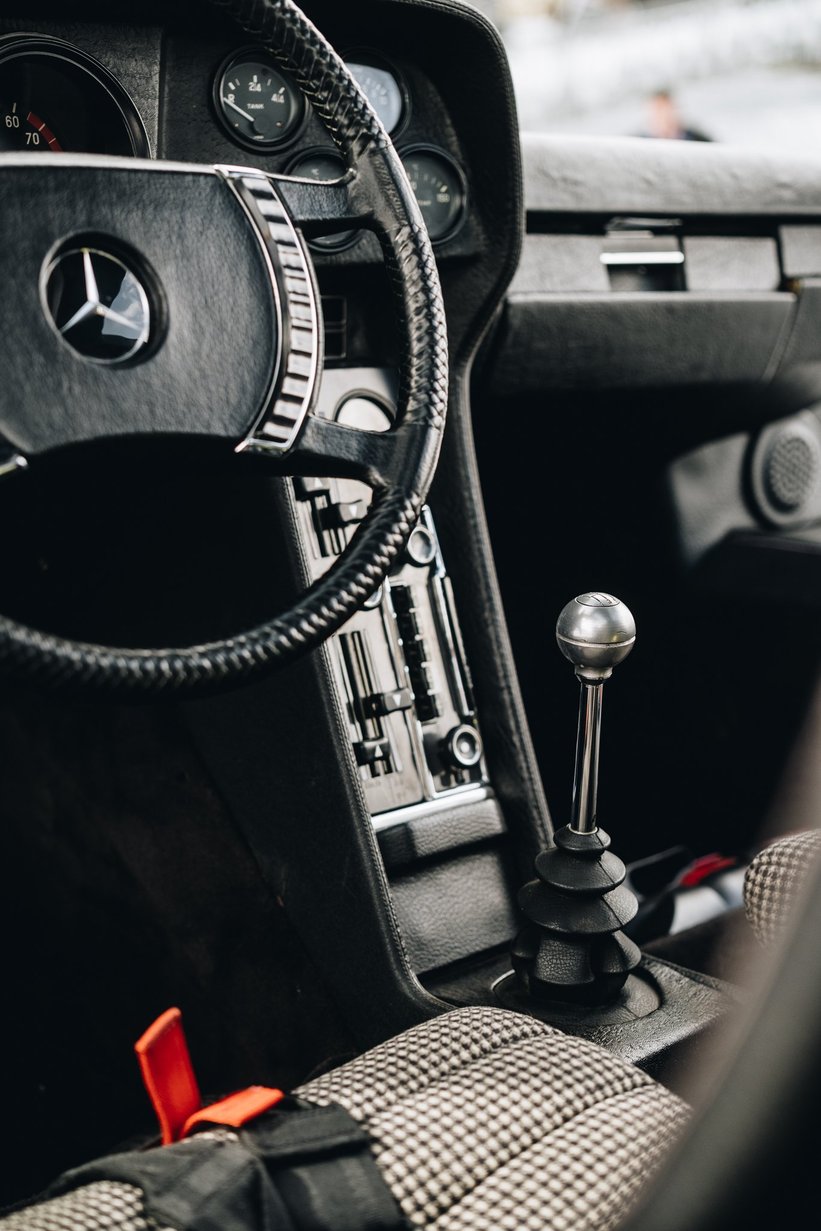
The futuristic car is a fitting place to examine further similarities of design approach and what Genta actually did in in 1976. His design was simple, aesthetic, understandable, honest, unobtrusive and long lasting, as demonstrated by the new watch I am wearing today. It ticked all the boxes of Rams’ 10 commandments of good design, but at the same time included enjoyable details. The “graph paper” inspired dial, the screws that fix the bezel to the case, the integrated but beautifully proportioned bracelet. In the Mercedes, I a notice similar approach. The instrument cluster is minimalistic and clear, the gear knob a perfect steel ball, but things like braided leather on the steering wheel or the steel mesh over the engine compartment add some flair this no-nonsense racing-inspired interior.
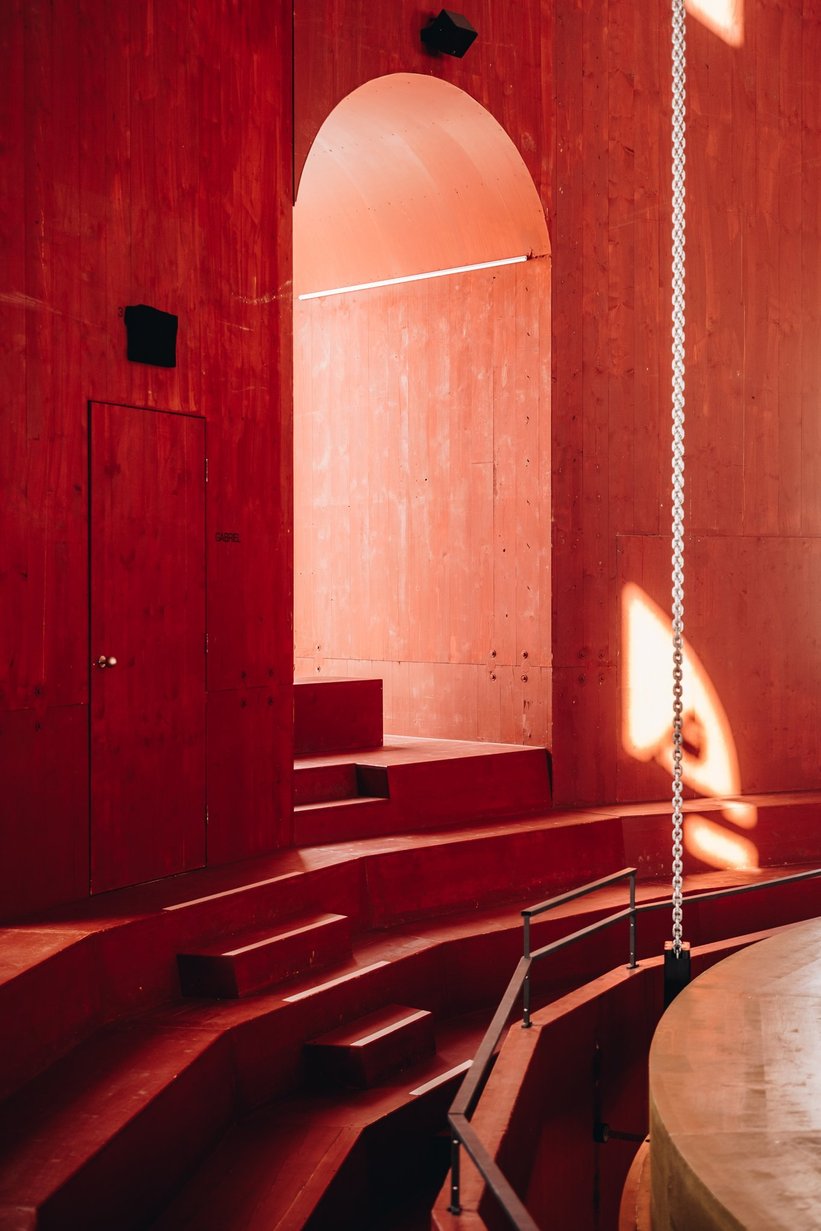

12:45 - 14:00 - Juliertheater and Ovaverva
After a spin in the car, I briefly want to get out of the town and head toward the famous red tower on Julierpass. Designed and planned by Giovanni Netzer, the Origen Festival Cultural director, it must be (next to the Belvedere Hotel on Furkastrasse) one of the most photographed places in the Alps. On the inside, it houses a concert and event space, which can host up to 220 people. The interior - also all red - has a stage, which is hanging from the ceiling on robust chains and can be moved through the floors by a system of pulleys. The harsh winter sunlight hits the structure in a way that underlines each shape within the building. A game of “shadows and light”. Another fantastic sundial of epic proportions that makes me feel like on a set of a Jodorowsky movie. From space it looks like a watch crown.

The Ovaverva is equally impressive. It houses the St. Moritz public baths and draws on the best modernist principles. A sprawling white marble and concrete structure almost blinding me with reflected light. A slim colonnade supports the floating roof and interior and exterior spaces transition fluently into each other within the structure.
It contrasts with the neighbouring eclectic townhouses as the organised shape of Juliertheatre contrasts with the surrounding peaks, but in both cases there is also a level of respect towards their surroundings. Hyperbolically, I translate this into what IWC’s Creative Director Christian Knoop has achieved by creating the watch I am wearing today. He didn’t cling onto the past, but while he was respectful of it, he also improved and reimagined what he thought mattered.
The 2023 Ingenieur Automatic 40 wears better than the original, even on my slender girly wrists. This is because the first middle link in the bracelet isn’t a static “nose shaped horn” integrated into the case anymore. It moves and by doing so, it offers improved ergonomics. The “butterfly" clasp disappears into the bracelet and extends the H-link design, of which the upper parts have closed links without visible pins. The dial features a reinterpreted “grid”of lines, which are now offset by 90 degrees. The glass covering is slightly curved for better overall perception of proportion. The most obvious difference, however, is the introduction of very practical crown guards and that the five polygonal screws that hold the bezel to the case are not put in randomly as before, but have gained a function.
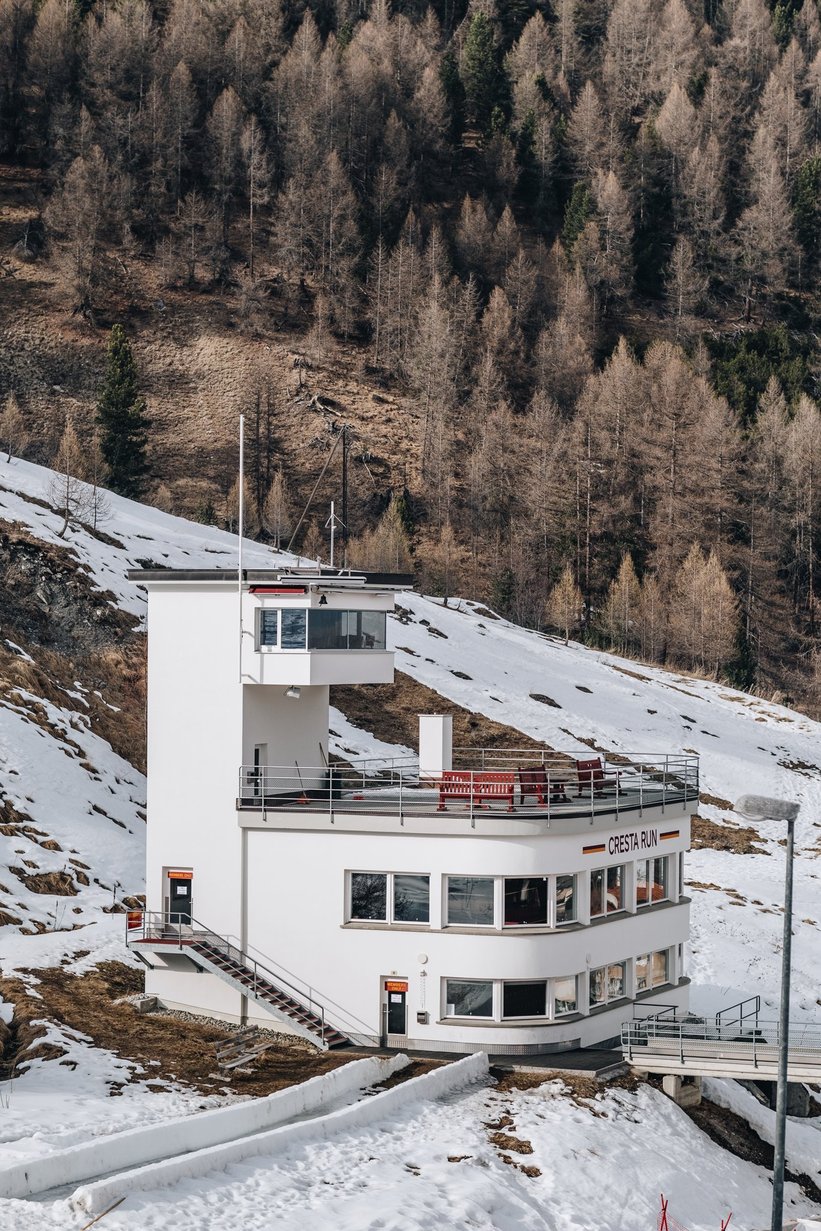

14:30 - 15:30 - SMTC Club House and two unique private residences
To pay my respects to a St. Moritz staple, I quickly pass by the fantastic mid-century private clubhouse of the famous Cresta Run. This building - an icon in its own right - saw the likes of Constantin von Liechtenstein, Gianni Agnelli, Gunther Sachs and a few other Lords and Sirs preside over proceedings. This includes not only hurling yourself head first to your death down a scary skeleton bob track (the first one in the world), but also a few quite eccentric rituals and traditions. Incidentally, the official timing partner of the SMTC and Cresta is… IWC. Tribute paid? Ownwards!
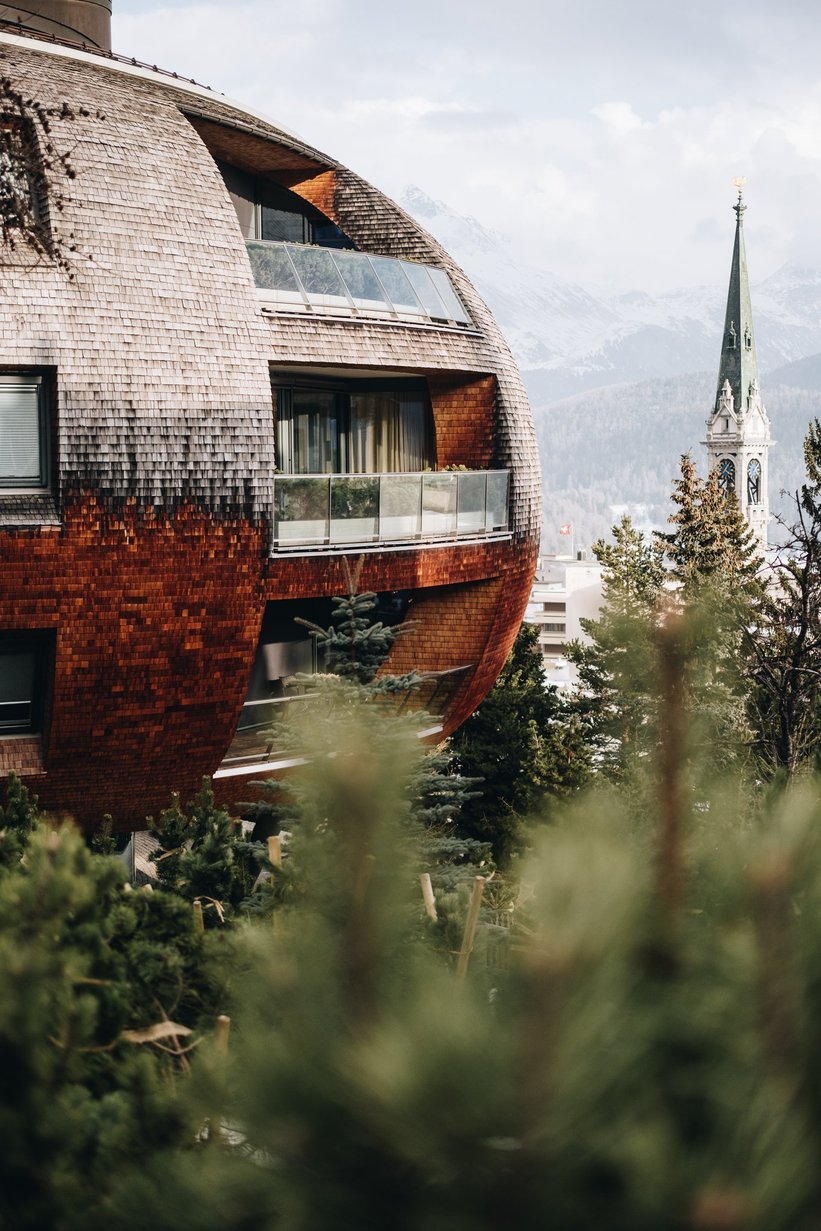

I also briefly stop by two modern dwellings. The first one Chesa Futura ('house of the future' in Romansch), by Foster and Partners, really plays well into the theme of the day: re-evaluating the past and the current context in order to create a meaningful future. Unfortunately, Sir Norman isn’t home so we can discuss this, but I enjoy the shape of this gigantic wooden bean - which fused state-of-the-art computer design tools with centuries-old construction techniques - as much as the Henry Moore sculpture below it.
The second one is the very raw and simple Chesa Campanille. The building expands towards the top and apartments overlooks the famous “leaning tower” of St. Moritz, the most striking testimony of the landslides that plague the region. I examine it up close, as the property isn’t fenced off, and touch the wide, roughly sawn larch boards used for facade cladding. Once again, I’m reminded about how details shape perception and how well-designed surfaces enhance our experience of objects. Here it’s wood. On my watch it’s the combination of satin and polished surfaces on the case and bracelet.

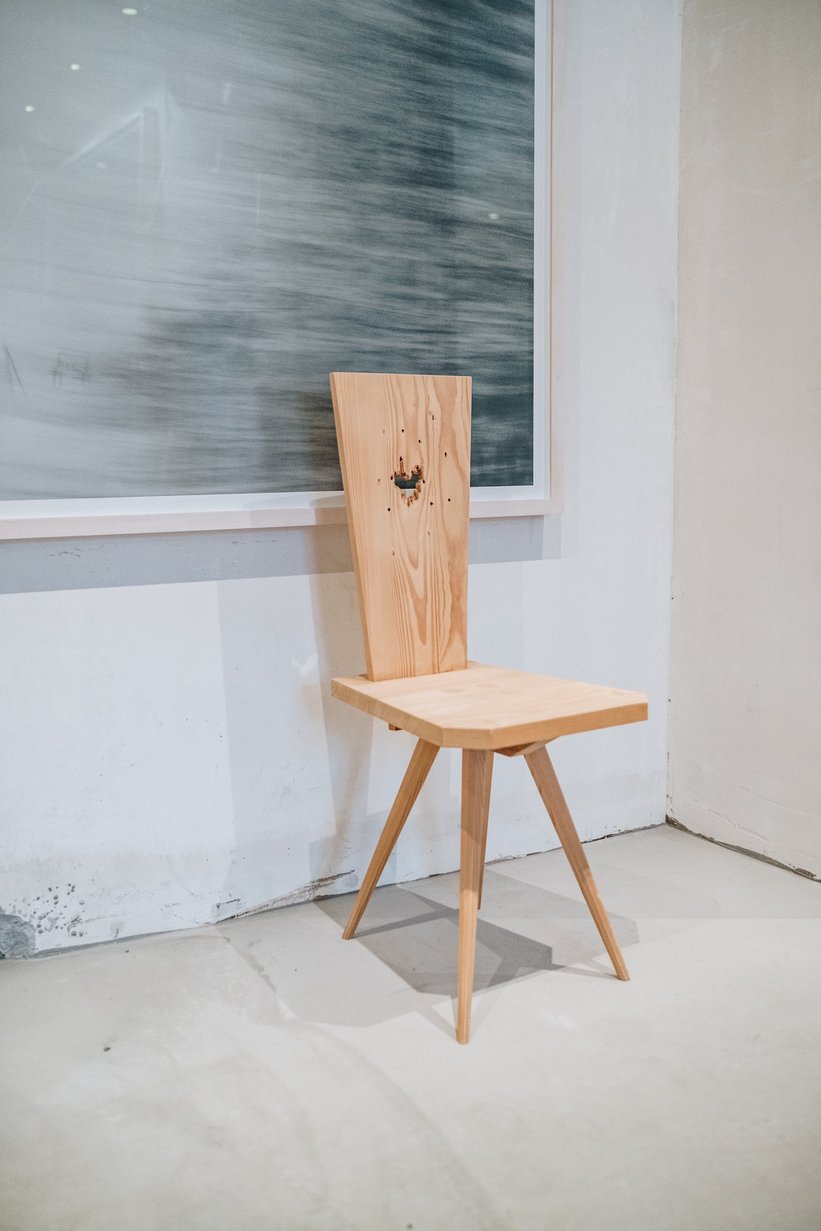
16:00-17:00 Nomad Circle
The day ends with a travelling art and design fair - the Nomad Circle - which on this weekend installed itself into the bowels of the yet unfinished Grace La Margna Hotel. While I admire the many works displayed - Alexander Calder tapestries, Man Ray graphics, Christo’s sketches and works by current SMTC president Rolf Sachs - I feel like this seemingly difficult mission of spotting design in a place that at times can feel like a true time-capsule wasn’t actually that arduous.
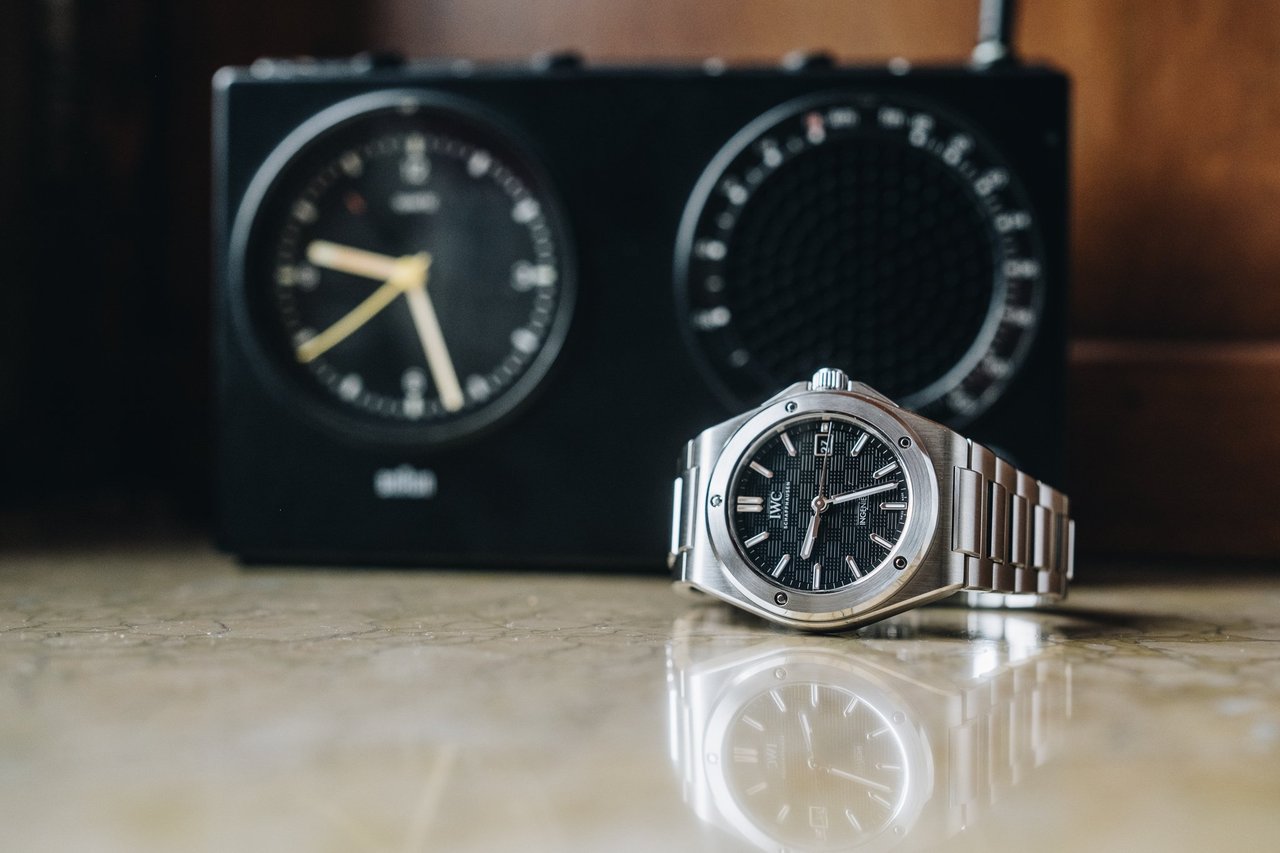
Once again, I immerse myself in a world of shapes, textures and original ideas. A good moment to point out that the Ingenieur Automatic 40 will be available not only in steel but also titanium, with three optional dials: black, silver and a bluish-turquoise the company calls “aqua”. Other options will surely follow. With that, my eight hours are up. One last glance at the watch before it has to be returned and until I get my own. Which I will.
Photos: Błażej Żuławski



























































